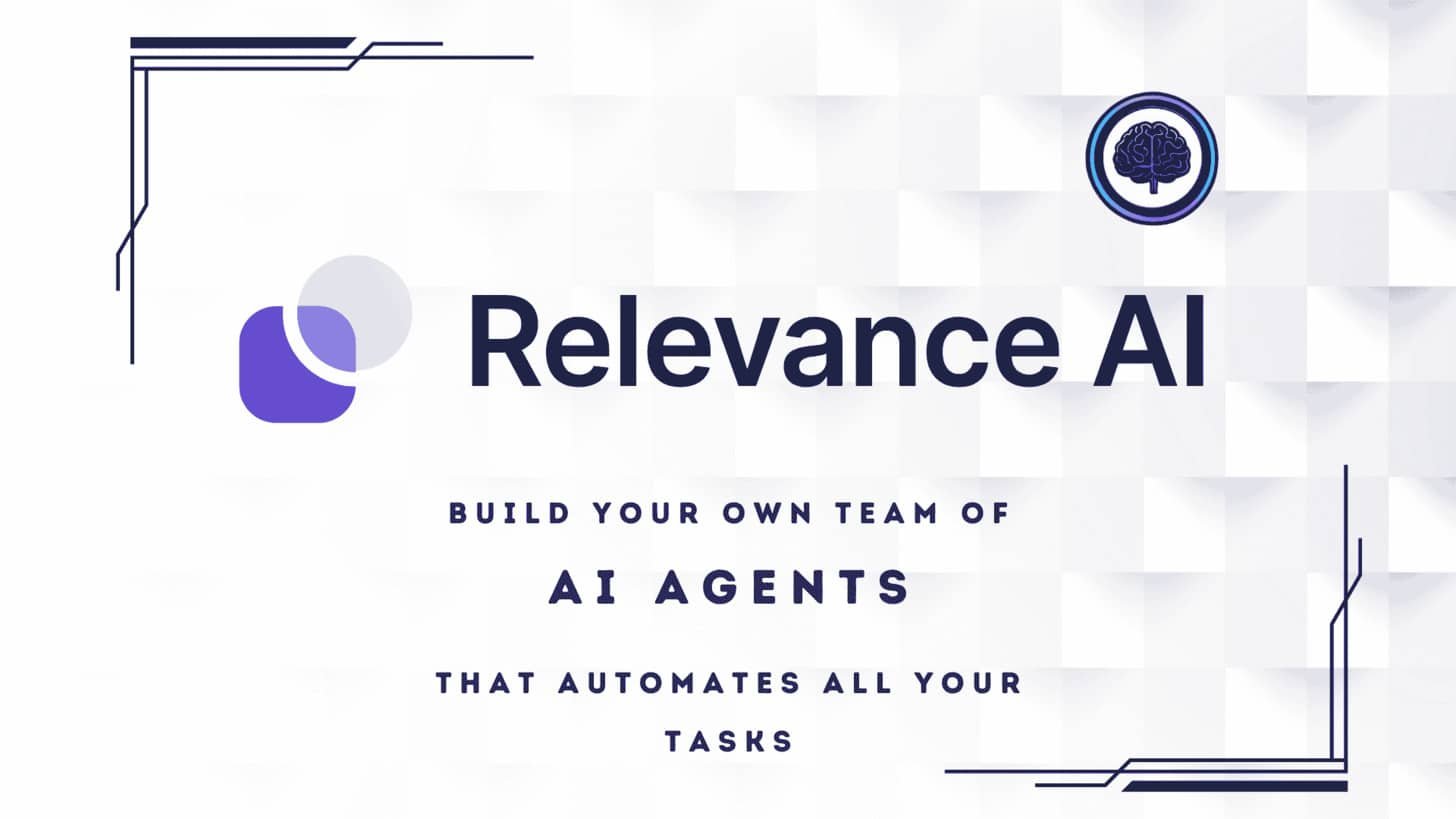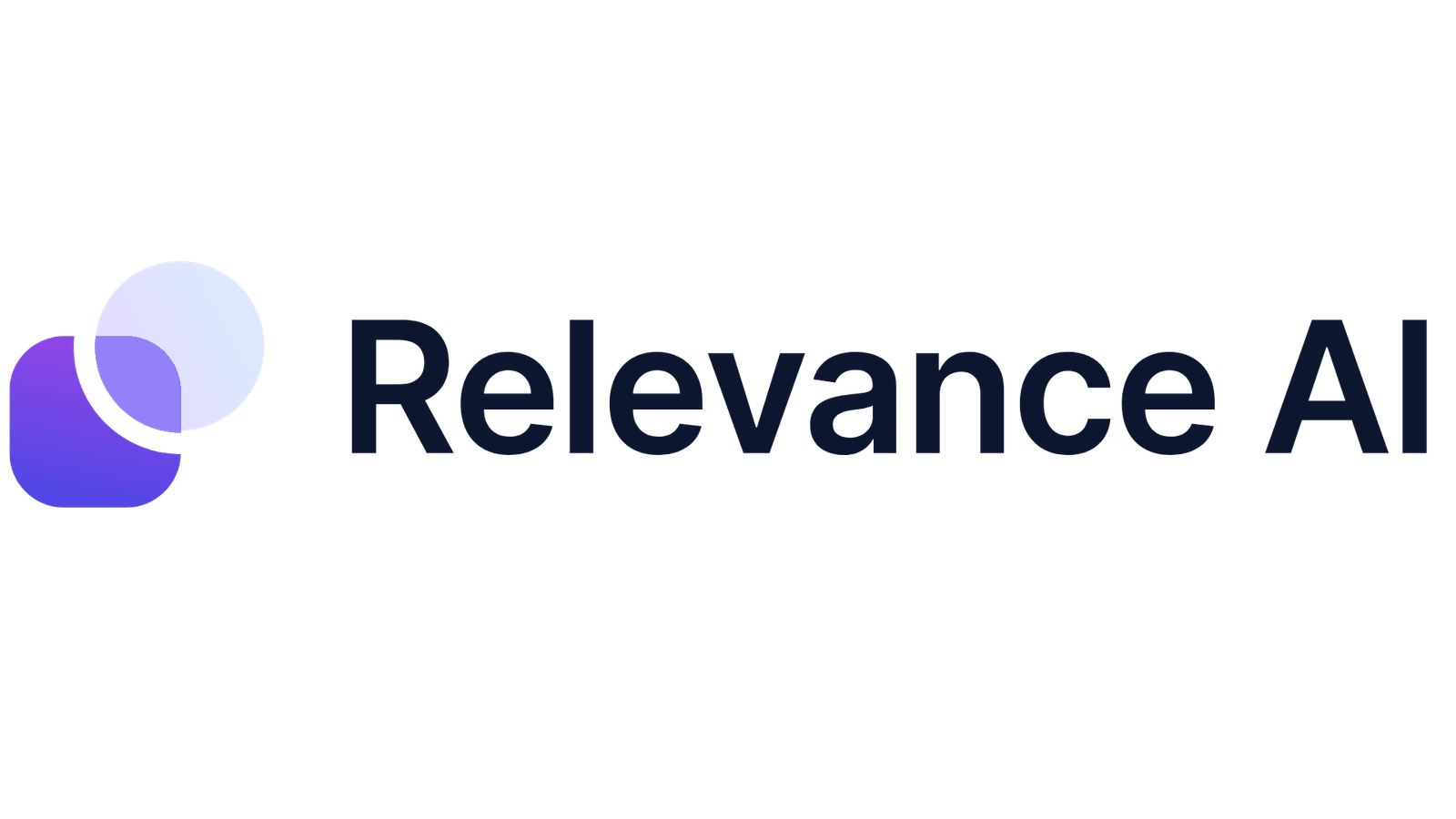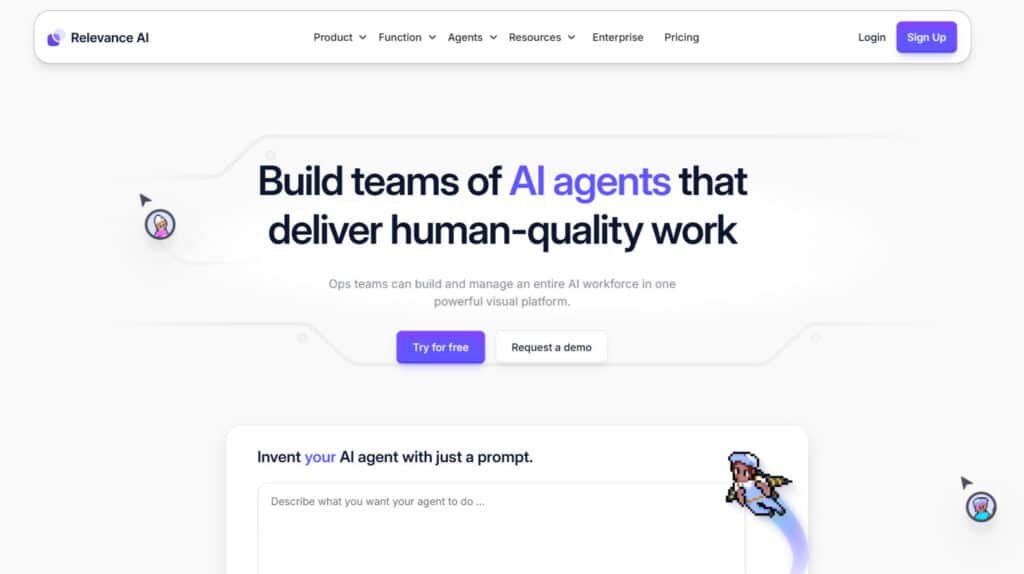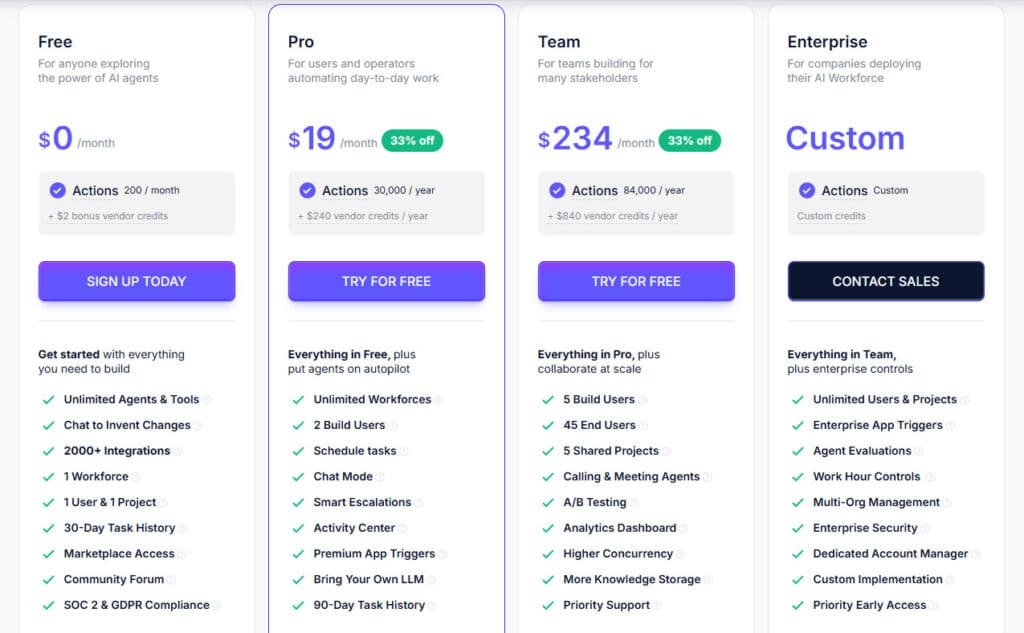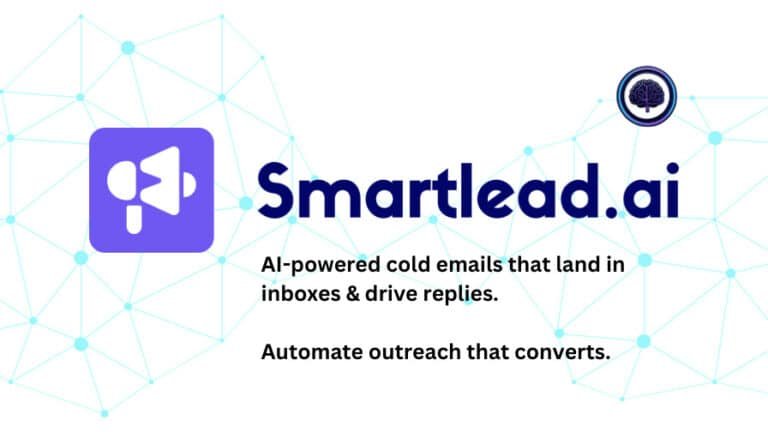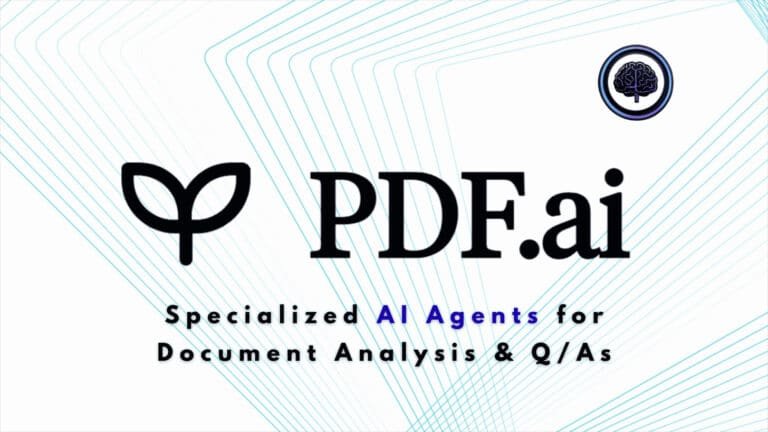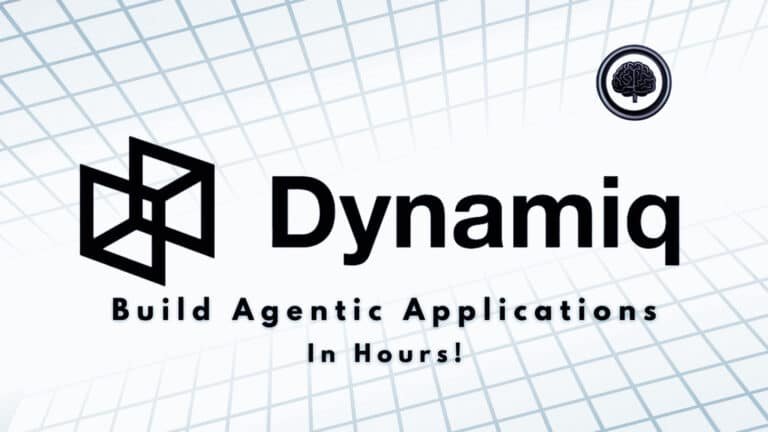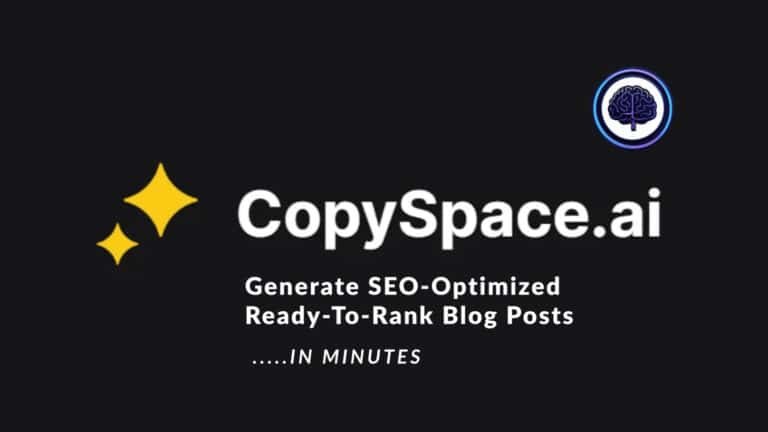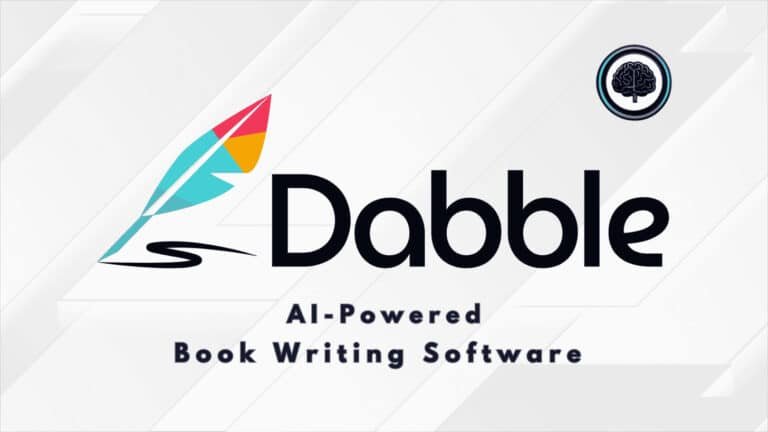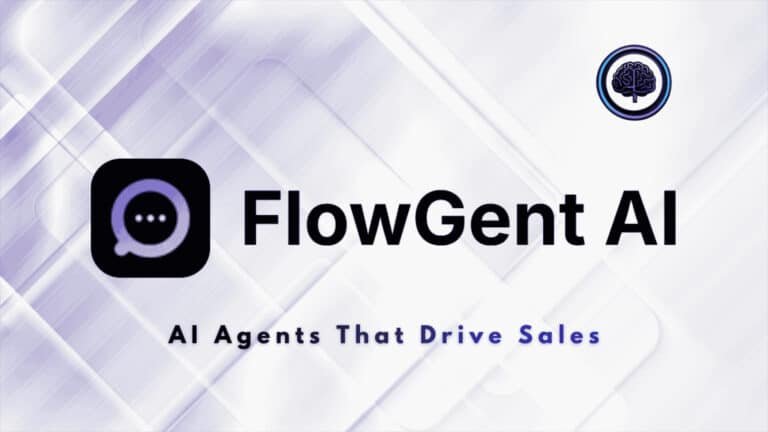You need a platform that scales agent-driven workflows for sales, support, research, and ops — without long build times or costly engineering. Many tools promise rapid wins but leave you juggling integrations and governance.
I’ve seen teams waste weeks tuning models, lose leads to slow handoffs, and struggle with inconsistent brand voice. That friction costs pipeline and time for users in U.S. businesses that must move fast.
I’ll give you an honest, experience-based look at this workforce platform — who built it, where it fits in the current tech stack, and which companies benefit now. You’ll get clear insights on features, pricing tiers, governance modes (Approval vs. Autopilot), and real-world outcomes for sales and operations.
I find it most useful when you need to start with one agent and scale to teams that coordinate across channels and your CRM. Expect practical guidance on tuning, costs, and when to build in-house versus adopting the platform.
Let’s dive in.
Key Takeaways: Relevance AI Review
- One-person starts to multi-agent teams — see when to scale.
- Clear pricing tiers for trial, Pro, Team, Business, and custom plans.
- Governance choices (Approval vs. Autopilot) protect brand voice.
- Fits U.S. sales and operations stacks that need faster handoffs.
- Real metrics covered: reply rates, time saved, and conversion lifts.
Relevance AI Review: An Overview
Raamish’s Take
Relevance AI stands out as a no-code platform designed to empower solopreneurs & ops teams to build and manage AI workforces with ease.
Its visual interface allows subject-matter experts to create custom AI agents without needing technical skills, making it accessible for businesses of all sizes.
The AI-powered platform excels in automation, offering tools like the AI BDR Agent for instant lead engagement and the AI Research Agent for quick, actionable insights.
With 100+ pre-defined customizable templates, you can jumpstart workflows in sales, marketing, or operations. Its enterprise-grade security, including SOC 2 (Type II) and GDPR compliance, ensures data safety, while seamless integrations with tools like CRMs make it highly practical.
Users praise its flexibility and ability to deliver human-quality work, as evidenced by case studies like SafetyCulture tripling meetings with AI agents.
The active community and support for top LLMs (OpenAI, Anthropic, etc.) enhance its value.
Ideal for scaling repetitive tasks, it’s a game-changer for teams aiming to boost efficiency without heavy developer reliance.
Introduction to Relevance AI
In this current AI landscape, AI Agent-driven workflows sit between your CRM and customer touchpoints, handling outreach, qualification, research, and admin so human reps can focus on closing and relationships.
Where agents fit in sales and operations
I see teams using agents to speed inbound SDR work, outbound BDR tasks, and support triage. They remove repetitive steps and keep handoffs tight—so pipeline friction drops and response times improve.
Company snapshot and platform focus
The company builds a no-code/low-code platform that is LLM-flexible. You can choose among OpenAI, Anthropic, Google, or Meta as llm providers. That makes cost, quality, and compliance tuning practical.
Who uses it and why it matters now in the U.S.
SMB and mid-market businesses adopt agents when bandwidth is tight. Security and compliance matter—there’s SOC 2 Type 2, GDPR readiness, and data region selection (US/EU/AU) during onboarding.
Practical note: Templates and the builder reduce time-to-value, while documentation and live chat provide customer support as teams ramp. Pick a clear plan that maps agents to your business needs.
What is Relevance AI?
Think of it as a toolkit for creating role-based assistants that take on routine business work. I’ve used it to model focused agent roles for sales, support, research, and ops so teams can stop juggling repeatable steps.
Agentic “workforce” platform for sales, support, and operations
It’s an agentic workforce platform: you create role-driven agents that act like purpose-built assistants. Each agent runs a slice of your workflow—qualification, outreach, ticket triage, or back-office automation.
How it benefits teams
- Lead gen & qualification: agents find and warm leads, then push meetings into your CRM—so reps focus on closing.
- Personalized outreach: hyper-targeted messages increase reply rates without manual copywriting.
- Automation of repetitive tasks: data entry, scheduling, and reporting run reliably, freeing staff time.
- Insights & consistency: templates and the workflow builder standardize processes and surface useful data about what works.
“Start in Approval Mode to train agents safely, then move to Autopilot for scale.”
My take: deploy agents against one high-volume task first. You’ll see faster response times and better coverage, then expand as the team adopts the platform.
Products and Core Offerings of Relevance AI
Relevance AI delivers innovative solutions for businesses seeking to harness artificial intelligence without coding expertise.
Its low-code/no-code platform empowers organizations to build and manage AI workforces, driving efficiency across operations, marketing, and more. Below, explore the core offerings that make Relevance a leader in AI-driven automation.
1. AI Agents
Relevance enables businesses to create AI agents in seconds, tailored for tasks like lead engagement and research.
These agents, such as the AI BDR Agent, automate marketing workflows, drive pipelines, and update CRMs, while the AI Research Agent delivers instant insights for sales calls.
Custom agents require no coding, offering the ability to adapt to any playbook.
With Relevance, subject-matter experts craft agents that learn processes and integrate seamlessly, transforming marketing and sales efficiency.
2. AI Workforce
The Relevance platform allows businesses to orchestrate multi-agent systems, creating scalable AI teams for high-stakes tasks.
From scratch or pre-built templates, these workforces handle complex operations across industries, enhancing marketing and operational outcomes.
Users deploy, tweak, and scale agents via a visual interface, iterating with natural language to ensure continuous improvement. Relevance’s solutions empower teams to focus on strategic goals while AI manages repetitive tasks.
3. AI Tools
Relevance equips AI agents with powerful tools through its Tool Builder, enabling custom integrations, LLM prompt chains, and API connections.
These tools enhance agents’ capabilities, such as converting transcripts into blogs or processing data in bulk. Pre-built integrations with over 2,000 apps streamline workflows, while custom code execution supports unique needs. Relevance ensures businesses access cutting-edge solutions without extensive training, boosting productivity across teams.
4. Integrations
With Relevance, businesses connect AI agents to over 2,000 apps, including Salesforce and Slack, to power seamless workflows.
Native integrations, webhooks, and triggers (e.g., new leads) activate agents instantly. Supporting multiple LLMs like OpenAI and Anthropic, Relevance offers flexibility for marketing and operational tasks.
Bring-your-own-LLM options further customize integrations, ensuring compatibility with existing tech stacks for comprehensive automation.
5. API
Relevance’s robust API enables businesses to trigger AI agents effortlessly, automating complex workflows.
Designed for rapid experimentation, it supports LLM-first notebook experiences, allowing users to test and deploy advanced use cases without complex setups.
This API enhances Relevance’s ability to deliver scalable, business-critical solutions, empowering organizations to integrate AI seamlessly into their processes with minimal training required.
Best Features of Relevance AI
Here are the standout features that actually move the needle for sales and ops teams. I’ll hit the practical parts first—what each capability does and how it hands work off in real use.
1. Invent (Build Quickly)
Relevance’s features enable quick building of custom AI agents through natural language descriptions. Users describe requirements, and the platform generates agents instantly, supporting chat-to-invent for iterative changes.
This helps readers in marketing teams to prototype solutions rapidly, reducing development time and allowing focus on core tasks like campaign optimization.
2. Customization and Deep Configuration
With relevance to business needs, agents are customized using natural language settings, AI tools, knowledge bases, and triggers.
This deep configuration allows adaptation to specific workflows, enhancing agent independence.
For those seeking efficient automation, this features set streamlines operations, enabling seamless integration that boosts productivity in marketing and sales processes.
3. Deployment and Scaling
Deployment in relevance involves starting small, tweaking, and scaling with tools like scheduling, approvals, and bulk runs.
This ensures controlled expansion, turning agents into chat experiences. Readers benefit by deploying scalable AI workforces, managing task volumes effectively, which supports growth without overwhelming resources.
4. Knowledge Management
Knowledge management captures metadata, uses bases for context, and employs version control for testing and restoration.
This provides agents with domain-specific insights, improving accuracy. It assists users in maintaining high-quality outputs, particularly in data-intensive areas, by ensuring agents rely on reliable, up-to-date information.
5. Iteration and Improvement
Iteration occurs via natural language refinements, A/B testing, and analytics for performance insights. Agents adapt over time with smart escalations.
This helps readers optimize AI systems continuously, addressing inefficiencies and enhancing results through data-driven adjustments.
6. Collaboration and Sharing
Collaboration features include role-based access, shared projects, and folders for organized teamwork. This facilitates solo or group work with clarity.
For collaborative environments, it enables secure sharing, fostering innovation in team settings like marketing strategy development.
7. Monitoring and Governance (AgentOS)
AgentOS offers a command center for scheduling, evaluations, and analytics, ensuring governance.
This provides total oversight, helping readers monitor AI performance, enforce controls, and maintain compliance in enterprise operations.
8. Advanced Capabilities
Advanced features encompass calling agents, premium triggers, bring-your-own-LLM, and error handling. These extend agent functionalities for complex tasks.
Readers in dynamic markets can leverage them to innovate, integrating AI in novel ways for competitive advantages.
9. Security and governance
Security posture includes GDPR readiness and SOC 2 Type 2. Use Approval mode to train safely, then move to Autopilot for scale—with audit trails and controls in place.
“Define knowledge sources, add examples, and set boundaries so agents act predictably.”
Functions of Relevance AI by Team
- Sales: Automate lead qualification, engagement, research, follow-ups, CRM enrichment, and call preparation to drive pipeline and reduce admin.
- Marketing: Generate SEO content/pages, manage lifecycles with personalized messaging, automate workflows, and capture data from agent tasks.
- Customer Support: Handle requests automatically, manage inboxes with personalized replies, and escalate complex issues.
- Research: Conduct human-quality account/prospect research on autopilot, providing rapid insights.
- Operations: Build custom agents for process improvement, scheduling, approvals, and scaling excellence across teams without developer reliance.
Use Cases of Relevance AI
- AI BDR Agent: Booking meetings 24/7 with instant lead engagement.
- Lifecycle Marketer: Personalized messaging for every customer.
- Account Researcher: Autopilot research for prospects.
- CRM Enrichment: Real-time data updates.
- Inbound Qualification: Qualify and book meetings.
- SEO: Automated content and page generation.
- Inbox Manager: Handle replies and follow-ups.
- Customer Support: Process support requests.
- Sales Notetaker: Capture call details.
- General: Automate mundane/repetitive tasks, research, prospect intel gathering, workflow optimization, and high-stakes business automation across industries.
Relevance AI Pricing Plans
Pricing is usage-driven: credits, runs, and storage define your monthly cost. I recommend mapping expected runs and knowledge size before you pick a plan so you avoid surprise overages.
Free Plan
The $0/month plan offers 200 actions/month and basic features like unlimited agents, 2,000+ integrations, and SOC 2 compliance for exploration.
Pro Plan
At $29/month (or $19/month annually with 33% discount), it provides 2,500 actions/month, $20 vendor credits, scheduling, and chat mode for individual automation.
Team Plan
Priced at $349/month (or $234/month annually with 33% discount), includes 7,000 actions/month, $70 credits, team users, analytics, and priority support for collaborative workflows.
Enterprise Plan
Custom pricing via sales contact, with unlimited users, advanced governance, and dedicated support for large-scale deployments.
“Price-to-value depends on run density—don’t overbuy; match a plan to your actual business needs.”
| Plan | Credits / Runs | Storage | Support / Notes |
|---|---|---|---|
| Free | 100 credits/day | 10MB | 1 user, low-code builder |
| Pro | 10,000 credits / 2,500 runs mo | 100MB | $19/mo, scheduled runs, live chat |
| Team | 100,000 credits / 33,333 runs mo | 1GB | $199/mo, GPT-4 hosting, priority support |
| Enterprise | 300,000 credits / 150,000 runs mo | 5GB | $599/mo, multi-agent, CSM |
| Bosh | Custom | Custom | High-volume sales; CRM integration; custom quote |
- Value tip: Pro or Team often fits U.S. SMBs; Business suits multi-department rollouts.
- Watch hidden costs: model choice, number of agents, and integration work can shift total cost.
- Security & compliance matter—factor them into storage and integration decisions.
Get Started with Relevance AI
Onboarding moves fast — you can set up an account, pick a data region, and launch a template-driven agent in a single afternoon.
Ease of use and onboarding flow for small to mid-sized teams
Account creation and region selection (US/EU/AU) are clear and guided. The low-code builder and templates cut the learning curve so non-technical users can contribute quickly.
Approval mode helps teams train agents safely. Move to Autopilot only after you validate actions.
Performance highlights
In my testing, qualification times dropped and personalized outreach improved reply rates. Bosh-style recommendations sharpened targeting and channel mix.
Teams reclaimed admin hours in week one — a measurable lift in sales and support efficiency.
Limitations to note
Pricing becomes sensitive as run volumes grow; plan for cost and choose a tier that matches expected runs. Users report occasional UI glitches and ask for deeper reporting for data-driven analysis.
Customer support via live chat is helpful but SLAs vary during spikes — document playbooks and monitor agent tasks early.
“Overall rating across user reviews sits near 4.4/5 — strong power and ease of use with room to improve analytics.”
| Area | Outcome | Notes |
|---|---|---|
| Onboarding | Fast | Templates, region choice, Approval mode |
| Performance | Improved lead quality | Personalized outreach, hours saved |
| Limitations | Pricing & reporting | Watch cost at scale; need richer analytics |
Pros & Cons of Relevance AI
Below I list clear wins and trade-offs so you can match capabilities to your business needs. I kept this short so you can scan and decide quickly.
What works
Strong automation across sales and operations cuts repetitive work and speeds handoffs. Templates let you iterate fast and standardize processes.
LLM flexibility stands out—support for multiple llm providers (OpenAI, Anthropic, Google, Meta) lets you tune cost and quality per task.
Security compliance (SOC 2 Type 2, GDPR readiness) and tight governance (Approval vs. Autopilot) make scaling safer for regulated teams.
Where it can be better
Cost rises with heavy runs—plan credits and runs to avoid surprise bills. Reporting is solid but power users will want deeper analytics.
Customer support is generally helpful, but experiences vary during peak loads—expect occasional delays for complex multi-agent setups.
“Start small: one or two agents, document SOPs, and expand once processes are stable.”
Practical verdict
- Pros: automation, fast templates, robust integrations, llm choice, and strong security.
- Cons: costs at scale, support variability, and an analytics wish list for advanced teams.
If those drawbacks matter, consider alternatives focused on voice or multichannel deliverability. For most U.S. teams, the balance of power, flexibility, and compliance hits the mark—if you standardize processes and start small.
Alternatives to Relevance AI
Choosing the right tool matters. If your priority is a single high-impact channel, or you need specialty voice features, other platforms may serve you better than a generalist agent platform.
YourGPT – The Sales & Support Beast
Trains on your website/docs in minutes, speaks your brand voice, and runs 24/7 across chat, WhatsApp, Slack. Starts at $49/month (annual). Best if you want leads while you sleep.
CustomGPT AI – Enterprise-Grade & Secure
No-code bots that handle 93% of support tickets with source citations. SOC2/HIPAA ready, 1,400+ file types supported. Starts at $99/month, white-label at $499. Perfect for regulated teams who hate hallucinations.
Flowise AI – Open-Source Freedom
Drag-and-drop multi-agent builder with full RAG, memory, and human-in-loop. Free self-host forever or $35/month cloud. Devs and startups love the zero lock-in vibe.
Stack AI – Big-Business Muscle
Connects to Slack, Salesforce, databases—full audit trails and approvals. Starts $99/month, custom enterprise plans. Finance and ops teams automate heavy workflows here.
Flowgent AI – Revenue-Focused Agents
Books meetings, qualifies leads, and closes deals across channels. White-label ready for agencies. Pricing is custom, but the ROI on bookings is insane.
| Tool | Key Strengths | Starting Price | Best For |
|---|---|---|---|
| Relevance AI | No-code workflows, multi-agent systems | $49/month | General automation & prototyping |
| YourGPT | Brand-voice chatbots, multi-channel leads | $49/month (annual) | Sales & customer engagement |
| CustomGPT AI | Secure, citation-backed, 93% ticket solve | $99/month | Compliance & support teams |
| Flowise AI | Open-source, RAG, human-in-loop | $35/month | Developers & startups |
| Stack AI | Enterprise integrations, audit trails | $99/month | Finance & regulated ops |
| Flowgent AI | Booking & revenue agents, white-label | Custom | Agencies & direct conversion |
Case Study and Personal Experience
I ran a 30-day pilot with a 12-person SMB sales team to test inbound and outbound agents in live workflows. We wanted concrete metrics: speed of qualification, reply rates, and booked meetings.
Scenario & setup
We used templates, connected the CRM, and chose the U.S. data region. Account creation, project setup, and invites took under an afternoon.
We fed knowledge (FAQ and product sheets), used modest storage, and launched in Approval mode for two weeks before moving some processes to Autopilot.
Results
After 30 days inbound qualification times fell from hours to minutes. Reply rates rose thanks to tighter personalization. Meetings booked increased and ops time saved was clear—automated scheduling and CRM updates cut routine tasks.
My experience and lessons
- What worked: tight prompts, clear disqualification rules, and model choices per task.
- Needed tuning: edge-case routing, fallback messages, and human escalation guidelines.
- Governance: Approval mode protected customer touchpoints; move to Autopilot only after steady outcomes.
“Net: tangible gains with manageable effort—budget for iteration and assign an owner to keep improving agent behavior.”
Conclusion
Raamish’s Take
Relevance AI stands out as a no-code platform designed to empower solopreneurs & ops teams to build and manage AI workforces with ease.
Its visual interface allows subject-matter experts to create custom AI agents without needing technical skills, making it accessible for businesses of all sizes.
The AI-powered platform excels in automation, offering tools like the AI BDR Agent for instant lead engagement and the AI Research Agent for quick, actionable insights.
With 100+ pre-defined customizable templates, you can jumpstart workflows in sales, marketing, or operations. Its enterprise-grade security, including SOC 2 (Type II) and GDPR compliance, ensures data safety, while seamless integrations with tools like CRMs make it highly practical.
Users praise its flexibility and ability to deliver human-quality work, as evidenced by case studies like SafetyCulture tripling meetings with AI agents.
The active community and support for top LLMs (OpenAI, Anthropic, etc.) enhance its value.
Ideal for scaling repetitive tasks, it’s a game-changer for teams aiming to boost efficiency without heavy developer reliance.
If your team needs fast, measurable wins in outreach and qualification, this platform delivers with minimal setup.
I recommend a short pilot: pick one high-impact agent, run it in Approval mode, and track reply rates and meetings booked. Start with a clear plan and weekly reviews so the team can tune prompts and knowledge quickly.
The platform balances no-code speed, llm flexibility, and strong security (GDPR readiness, SOC 2 Type 2). Pricing scales from Free to Business—map runs to avoid surprise costs and pick models that match your needs.
Bottom line: Test a single workflow for 14 days, connect your CRM, and decide from real results. Spin up your first agent and you’ll know if this tool fits your business needs and growth plan.
Frequently Asked Questions
What does the platform do for sales, support, and operations?
It creates agentic teams—automated agents that handle lead qualification, personalized outreach, customer replies, research, and admin tasks. I’ve used similar setups to cut response time and free up reps for higher-value work.
Who typically uses the platform and why?
Small to mid-sized sales and operations teams in the United States adopt it for faster lead qualification, improved outreach personalization, and to automate repetitive workflows. You’ll see the biggest impact where teams juggle high message volumes and manual data entry.
How easy is onboarding for non-technical teams?
The low-code builder and templates make setup straightforward. I find the initial flow intuitive—connect your CRM, pick a template, and tweak agent prompts. More advanced orchestration benefits from a short learning period.
Which large language models can I use?
The architecture is LLM-flexible—you can pick providers like OpenAI, Anthropic, Google, or Meta. That gives you choice for cost, latency, and capability trade-offs depending on your use case.
Can agents integrate with my existing CRM and tools?
Yes—there are built-in integrations for common CRMs and workflow tools so agents can push leads, update records, and trigger handoffs. I recommend testing a sandbox connection before wide rollout to verify field mappings.
How does the platform handle security and compliance?
It emphasizes security—GDPR-ready controls and SOC 2 Type II coverage are available. You can also select data-region options and governance modes to limit data flow and enforce approvals.
What governance options exist for agent actions?
Two primary modes—Approval (human-in-the-loop) and Autopilot (automated). Approval mode is great for sensitive outreach; Autopilot boosts scale when you trust the agent’s performance.
What are the core agents I should consider first?
Start with inbound SDR for quick qualification, outbound BDR for prospecting and personalized outreach, and an operations agent to automate scheduling and data entry. Add a customer support agent for 24/7 responses once workflows stabilize.
Does the platform provide reporting and insights?
Yes—agents generate performance metrics like qualification rates, open/reply rates, and time saved. If you need deeper analytics, plan for custom dashboards or exports to your analytics stack.
What pricing tiers are available and how do they differ?
There’s a Free tier with daily credits and basic storage, Pro for expanded runs and live chat support, Team for higher limits and hosted GPT-4 options, and Business/Bosh for multi-agent systems and custom enterprise quotes. Choose based on volume and support needs.
Is the platform cost-effective at scale?
It delivers strong automation ROI, but costs climb with heavy multi-agent usage or high-volume LLM calls. I suggest running a pilot to estimate costs against booked meetings and time savings before full deployment.
How reliable is customer support and ongoing maintenance?
Support varies by plan—priority assistance for Team and enterprise customers is common. In my experience, proactive onboarding resources speed progress, though occasional glitches require quick vendor coordination.
What limitations should I expect?
Watch for pricing sensitivity at scale, occasional platform bugs during rapid feature releases, and the need for more advanced analytics out of the box. These are manageable with governance, testing, and third-party tools.
How does it compare to multichannel sales tools like Reply.io?
This platform focuses on agent orchestration and LLM flexibility, while Reply.io emphasizes deliverability and outbound sequencing. If you need deep deliverability controls, consider combining tools or choosing the specialist.
Are there voice or phone-call capabilities similar to Dasha or Retell?
Voice features are more limited than dedicated voice platforms. For ultra-realistic calls or comprehensive telephony, Dasha or Retell remain better fits; use this platform for text-driven automation and handoffs.
How should I plan a pilot deployment?
Define objectives (lead volume, qualification time), pick one inbound and one outbound agent, connect CRM in a sandbox, use Approval mode initially, and measure booked meetings and time saved over 4–6 weeks.
What success metrics should I track?
Track qualified leads per week, reply and conversion rates, meeting show rates, time saved by reps, and cost per qualified lead. Those tell you whether agents are improving pipeline efficiency.
Can I host models privately for data-sensitive use cases?
Yes—there are options for hosted or private LLM deployments depending on your plan. That reduces data exposure to third-party providers and helps meet compliance needs.
What kind of templates and low-code options are available?
You’ll find reusable templates for common workflows—SDR outreach, lead routing, customer replies—and a low-code builder to customize flows without deep engineering effort. I often customize templates to reflect voice and SLA rules.
How do teams manage multi-agent orchestration?
Use built-in orchestration tools to sequence tasks—research, outreach, qualification, CRM handoff. Clear role definitions and governance rules keep agents from duplicating work and ensure smooth handovers.

